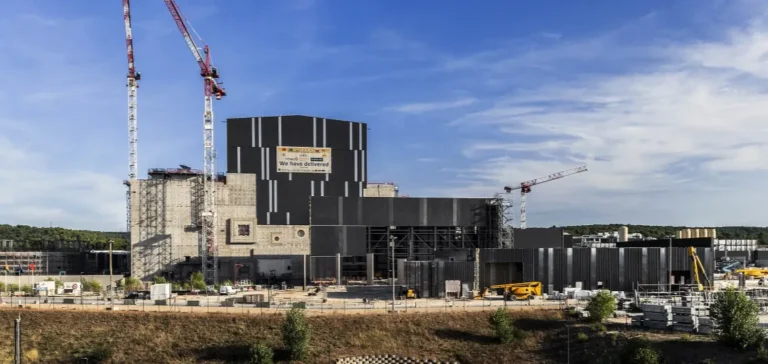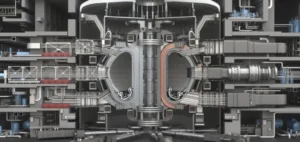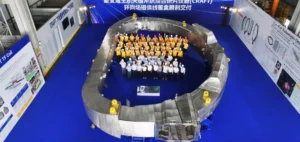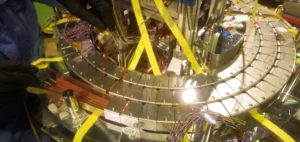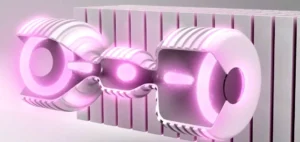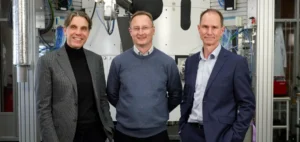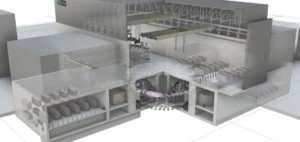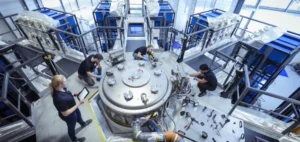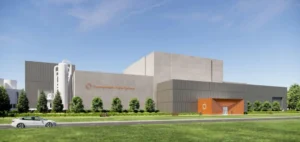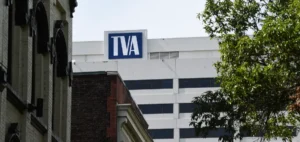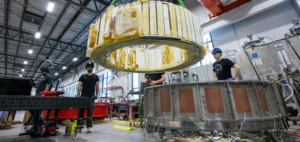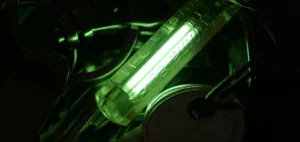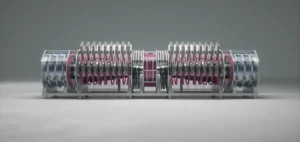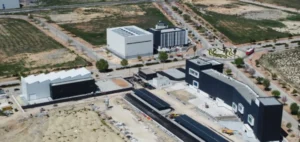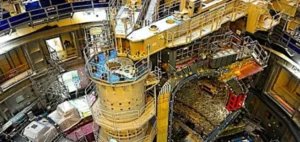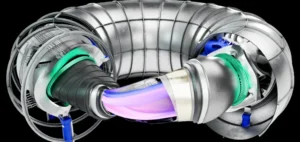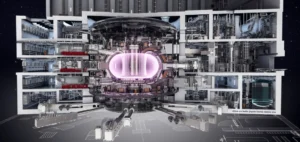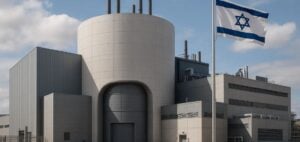The ITER (International Thermonuclear Experimental Reactor) project has reached a new milestone with the completion of its control building, designed to provide continuous oversight of the reactor under construction. Located in Cadarache, south-eastern France, the 3,500-square-metre facility was built by French company Demathieu Bard on behalf of Fusion for Energy (F4E), the European agency responsible for the European Union’s contribution to ITER.
The construction, which took five years and over 200,000 working hours, includes an 800-square-metre main control room with 30 workstations, server rooms, offices, a command post, a visitor gallery and a dining area. A pedestrian bridge now connects the structure to the ITER headquarters to facilitate team movement between both areas.
Technical facilities designed for round-the-clock supervision
The building was designed for 24-hour operation, with specific standards for accessibility, acoustic comfort and indirect natural lighting. Following the building’s delivery, technical installation work included ventilation systems, electrical networks and fire safety infrastructure. In parallel, ITER teams installed IT equipment in 80 electronic cubicles dedicated to real-time data processing.
The first technical staff have started to move in, transferring operations from temporary control rooms to the new facility. The building will play a central role in the commissioning phase and upcoming test operations by overseeing the systems currently under evaluation.
A milestone in preparing the reactor for operation
ITER aims to demonstrate the feasibility of nuclear fusion as a large-scale energy source. The experimental facility is designed to produce 500 MW of thermal output for 50 MW of plasma input, though the site is not intended to generate electricity. According to revised plans, a first operational phase with deuterium-deuterium fusion is targeted for 2035.
Thirty-five countries are participating in the project, with the European Union financing nearly half of the cost. The other members – China, India, Japan, South Korea, Russia and the United States – share the remainder equally. Construction began in 2010 and has undergone several scheduling adjustments. The control building now stands as a critical infrastructure for the site’s technical maintenance and operational oversight in the years ahead.


